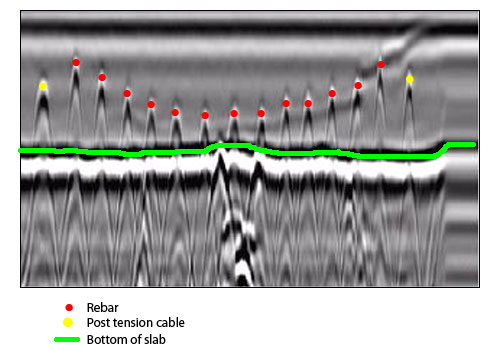Comprehensive Overview to Concrete Scanning Technologies
Comprehensive Overview to Concrete Scanning Technologies
Blog Article
Past the Surface: Leveraging Advanced Concrete Scanning Techniques for Unmatched Precision and Insight
In the realm of construction and infrastructure maintenance, the quest for precision and thoroughness is never-ending. Advanced concrete scanning strategies have become essential tools in this pursuit, using a look under the surface to reveal a globe of vital insights. By harnessing innovative technologies, specialists can reveal anomalies, assess the problem of concrete structures, and make notified decisions that shape the program of projects. The effects of these methods extend far past plain surface-level assessments, assuring a depth of accuracy and understanding that is unrivaled.
Importance of Advanced Concrete Scanning
The value of using advanced concrete scanning methods depends on the unmatched precision they use for finding sub-surface anomalies and making sure architectural honesty. By employing sophisticated innovations such as ground-penetrating radar (GPR), electro-magnetic induction, and progressed sonar imaging, building specialists can delve beneath the surface of concrete frameworks with a degree of precision that much goes beyond typical examination methods. Concrete Scanning. These strategies enable the recognition of surprise dangers like rebar rust, voids, conduits, or post-tension cables that might endanger the stability and security of a structure in time
Furthermore, progressed concrete scanning gives invaluable insights into the overall problem of a concrete aspect without the requirement for intrusive procedures, lessening the risk of causing damages throughout the evaluation process. The ability to pinpoint the exact location and deepness of possible problems enables targeted repairs and maintenance, eventually prolonging the lifespan of the structure and maximizing its performance. Essentially, the value of sophisticated concrete scanning can not be overemphasized in the world of building and construction and facilities maintenance, where precision and integrity are paramount.
Kinds of Cutting-Edge Technologies

Anomalies and Problem Discovery

Along with GPR, concrete scanning methods like thermography and impact-echo screening are additionally effective in discovering anomalies and flaws. Thermography utilizes infrared innovation to determine variants in surface area temperature level, suggesting possible locations of issue such as delamination or wetness ingress. On the other hand, impact-echo testing involves evaluating acoustic reactions to identify gaps, splits, and various other flaws within the concrete. By leveraging these sophisticated techniques, experts can proactively deal with structural concerns, ensuring the long life and safety and security of concrete frameworks.
Assessing Concrete Condition
Just how can engineers precisely assess the problem of concrete structures to ensure their longevity and security? Numerous advanced concrete scanning methods are used for this objective. Ground-penetrating radar (GPR) is commonly made use of to examine the interior framework of concrete, identifying spaces, fractures, and other anomalies that may jeopardize its stamina.
Moreover, visual evaluation continues to be an essential component of concrete problem analysis. Designers aesthetically examine the surface for signs of damage, such as spalling, fracturing, or staining. Combining non-destructive screening methods with aesthetic inspections Extra resources allows for a comprehensive examination of concrete problem, allowing designers to determine prospective problems beforehand and apply prompt upkeep or repair services. By leveraging these advanced techniques, engineers can ensure the long-term resilience and safety of concrete structures.
Enhancing Decision-Making Procedures
In the world of facilities management, maximizing decision-making processes is crucial for guaranteeing the reliable maintenance and longevity of concrete frameworks. Enhanced decision-making procedures in concrete management entail using advanced scanning methods to gather thorough information on the condition of frameworks. By leveraging modern technologies such as ground-penetrating radar and 3D imaging, stakeholders can make enlightened choices relating to repair service, substitute, or reinforcement techniques.
These advanced scanning strategies supply indispensable understandings right into the internal structure of concrete, identifying potential problems such as gaps, cracks, or corrosion that might not show up externally. This level of in-depth info enables aggressive maintenance planning, lessening the threat of structural failures and boosting the total lifespan of concrete frameworks.
In addition, by incorporating digital documentation and analysis tools into the decision-making process, stakeholders can track the development of concrete conditions in time, allowing predictive maintenance techniques and optimizing resource allowance. Eventually, the combination of advanced concrete scanning techniques enhances decision-making procedures by giving unequaled accuracy, understanding, and effectiveness in facilities management.
Conclusion
In verdict, progressed concrete scanning methods provide unequaled accuracy and insight in discovering anomalies, defects, and analyzing the problem of concrete structures. By leveraging advanced technologies, decision-making procedures can be improved, leading to even more educated and efficient solutions for keeping and fixing concrete infrastructure. These methods play a vital function discover this info here in making certain the security and longevity of concrete frameworks, making them a crucial tool in the field of building and design.
Additionally, advanced concrete scanning gives indispensable understandings into the total condition of a concrete component without the need for intrusive steps, lessening the threat of creating damages throughout the analysis process - Concrete Scanning. Another ingenious modern technology is 3D X-ray scanning, which offers thorough pictures of the inner structure of concrete, providing beneficial info without the need for devastating testing. Furthermore, Concrete Cover Meters are made use of to determine the thickness of concrete cover over support bars accurately. Improved decision-making procedures in concrete monitoring involve using sophisticated scanning strategies to collect thorough data on the condition of frameworks.In final thought, progressed concrete scanning strategies offer unmatched accuracy and insight read what he said in finding abnormalities, issues, and assessing the condition of concrete structures
Report this page